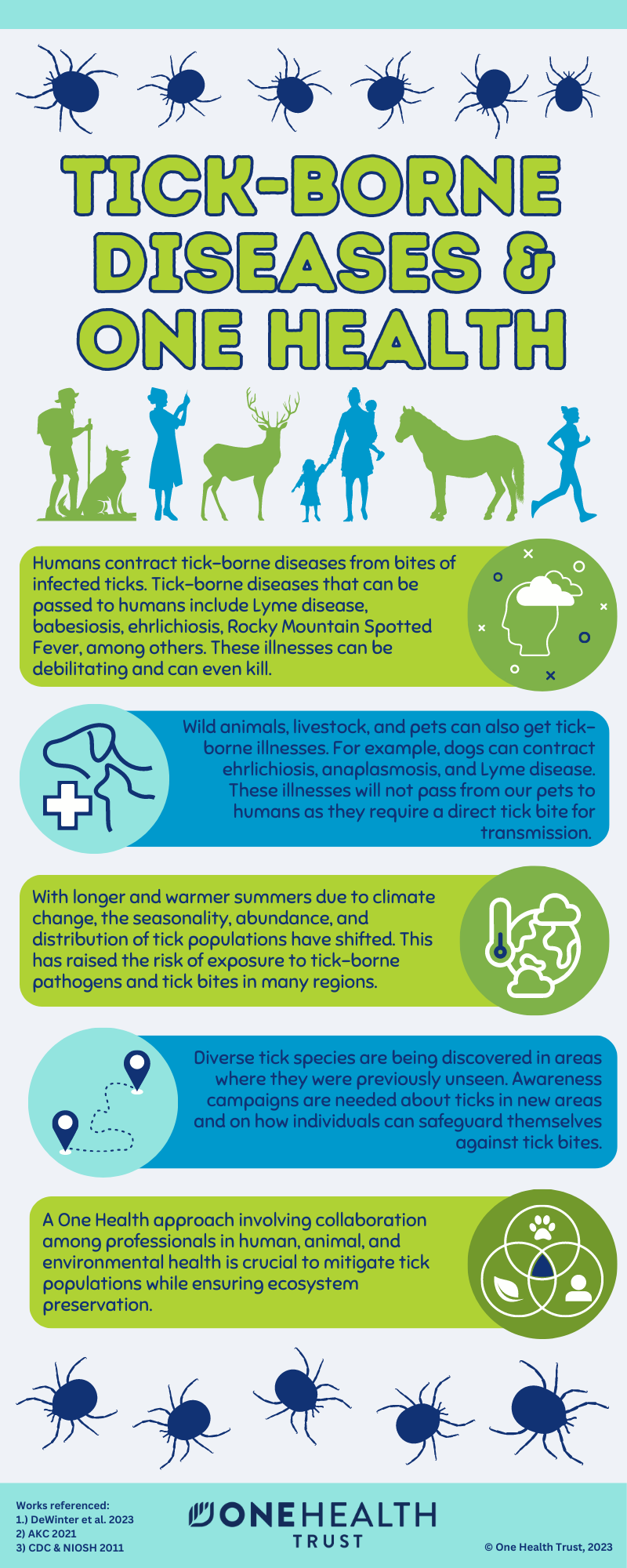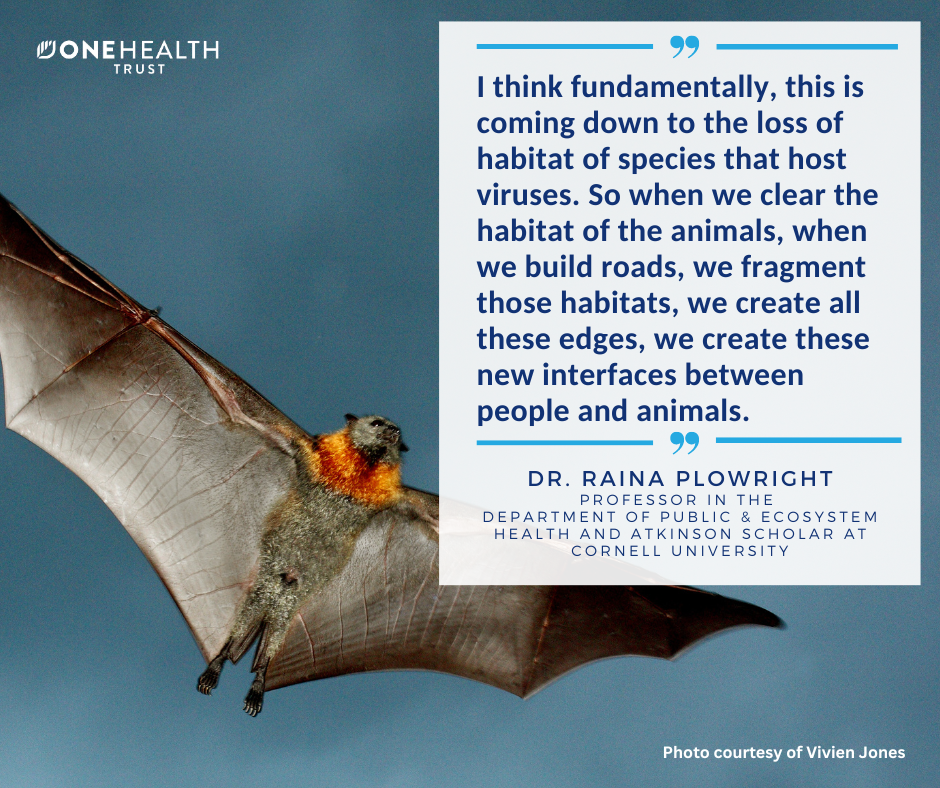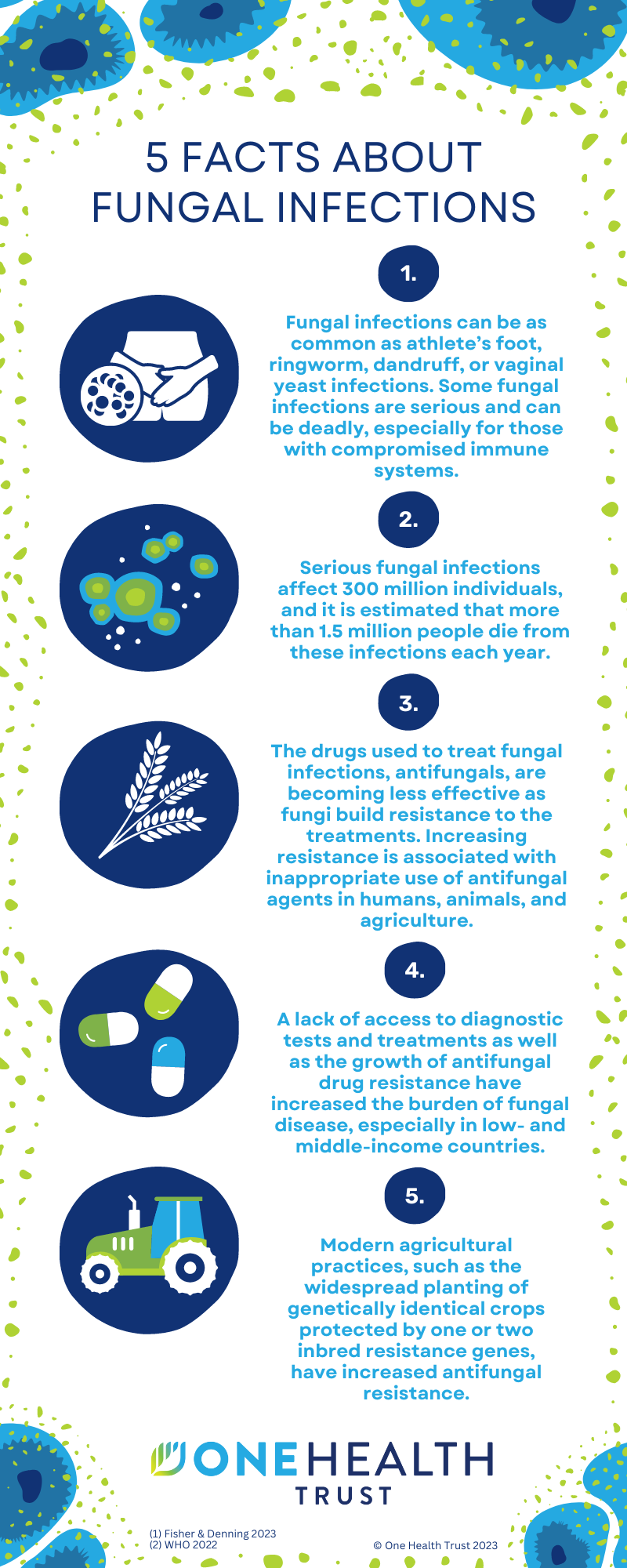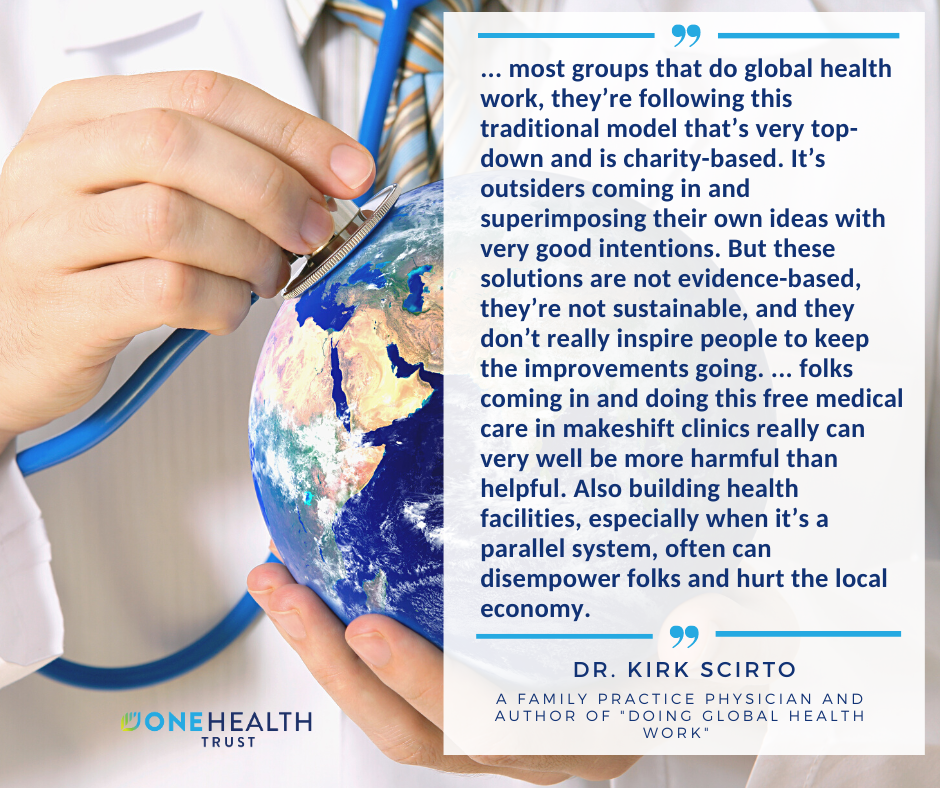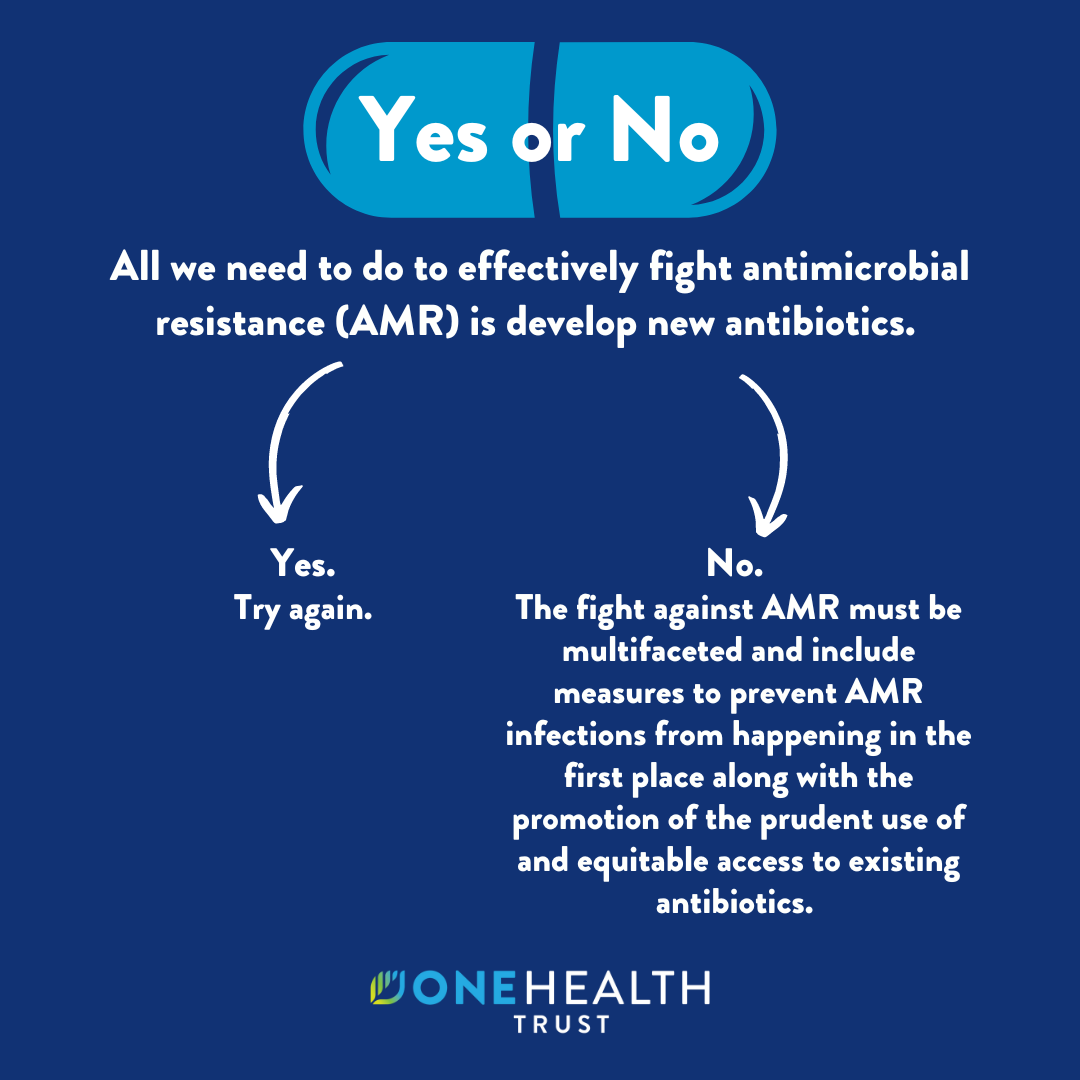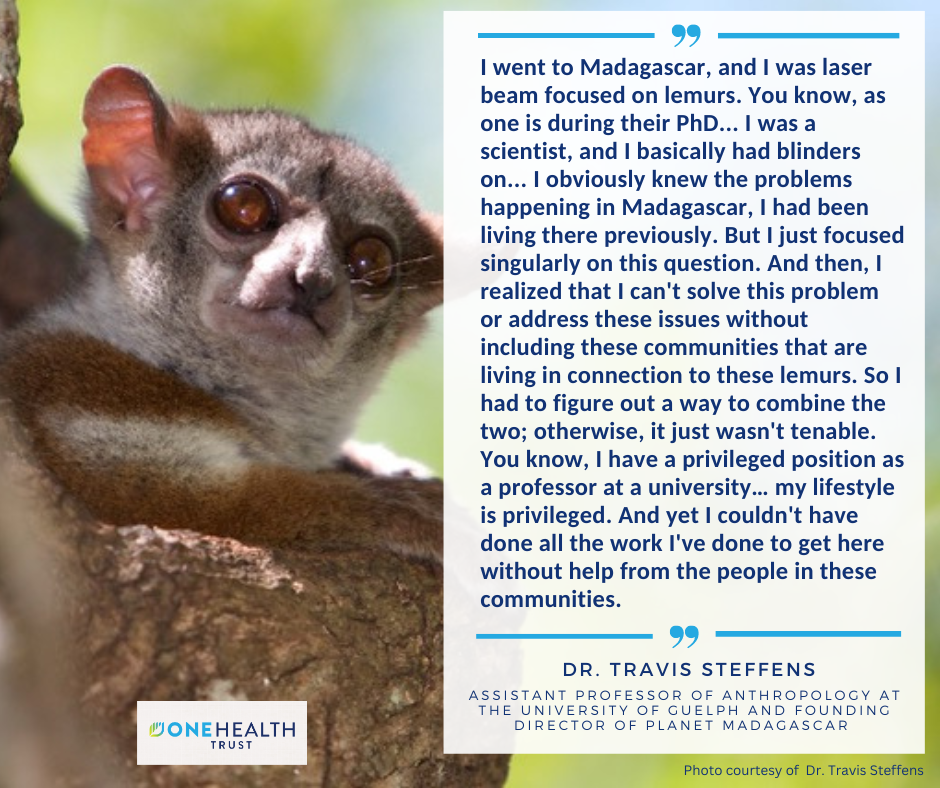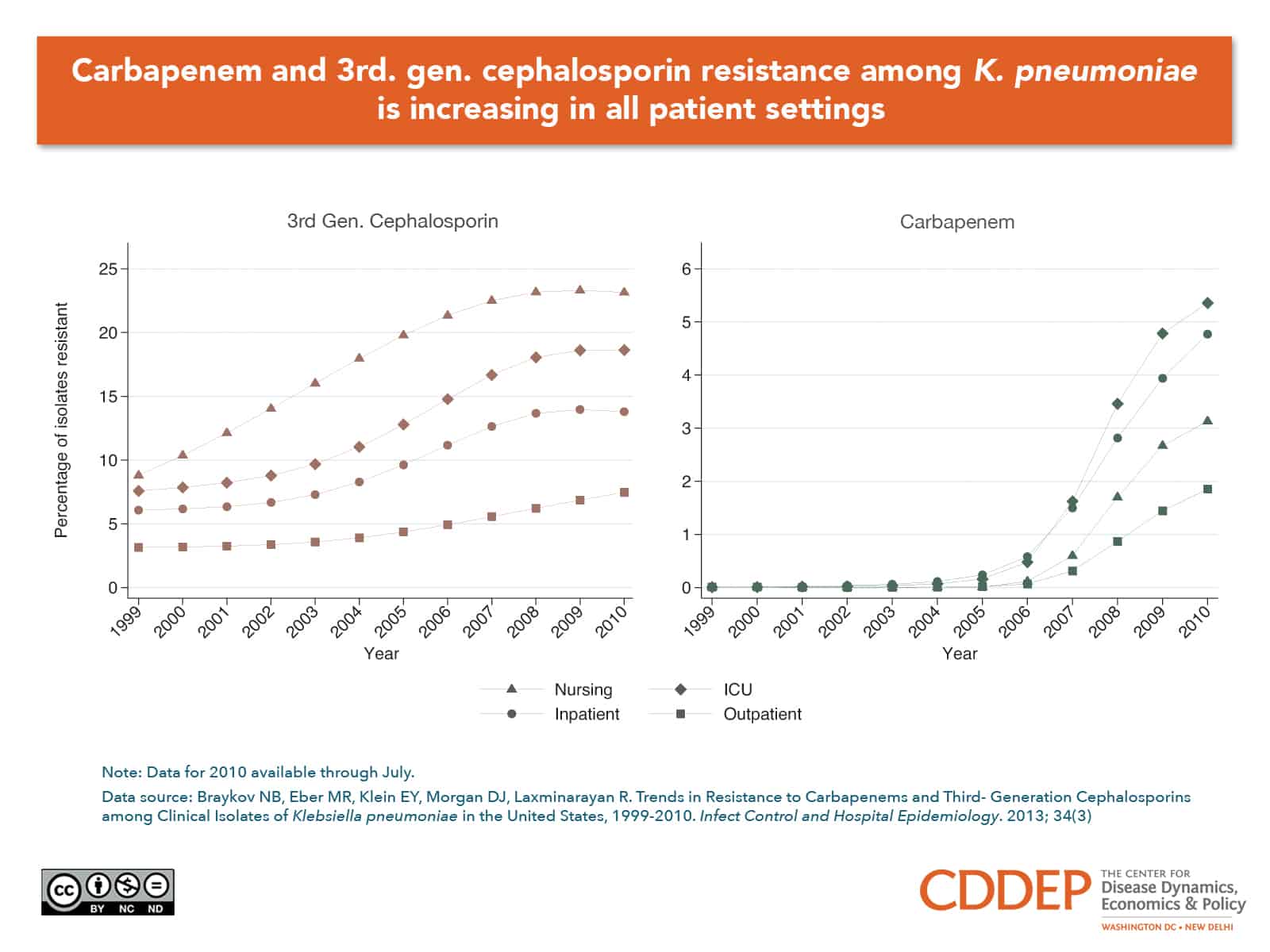
January 23, 2013
The line graphs show the proportion of K. pneumoniae isolates that exhibited resistance to carbapenems (CRKP) and third-generation cephalosporins (G3CRKP) across different patient settings between 1999 and 2010. Previous research has shown carbapenem-resistant infections primarily affect critically-ill or bed-ridden patients. Hence, it is unsurprising that CRKP first spiked among samples from ICU and inpatient wards. However, resistance among cultures from outpatients and nursing home residents was also on the rise, reaching respective levels of 1.85% and 3.1% by 2010. For G3CRKP, the prevalence of resistance among isolates from nursing homes exceeded 20%, highlighting the importance of this patient group in the dissemination of drug-resistant organisms.
The emergence of CRKP, particularly in the non-acute setting, is disconcerting for several reasons. First, CRKP infection is associated with a fatal outcome in 47% 57% of cases. Second, treatment is limited to older antibiotics known for high kidney toxicity a limitation that highlights the urgent need to develop drugs active against Gram-negative bacteria. Third, the ability of resistance-encoding genes to spread through plasmid transfer enables the spread of resistance to related species like E. coli, a transfer that may occur even in the same patient. Finally, CRKP genes may escape detection in routine laboratory testing. The epidemiology of carbapenem-resistant bacteria thus has the potential to replicate the endemic spread of MRSA beyond hospitals and into the community.

